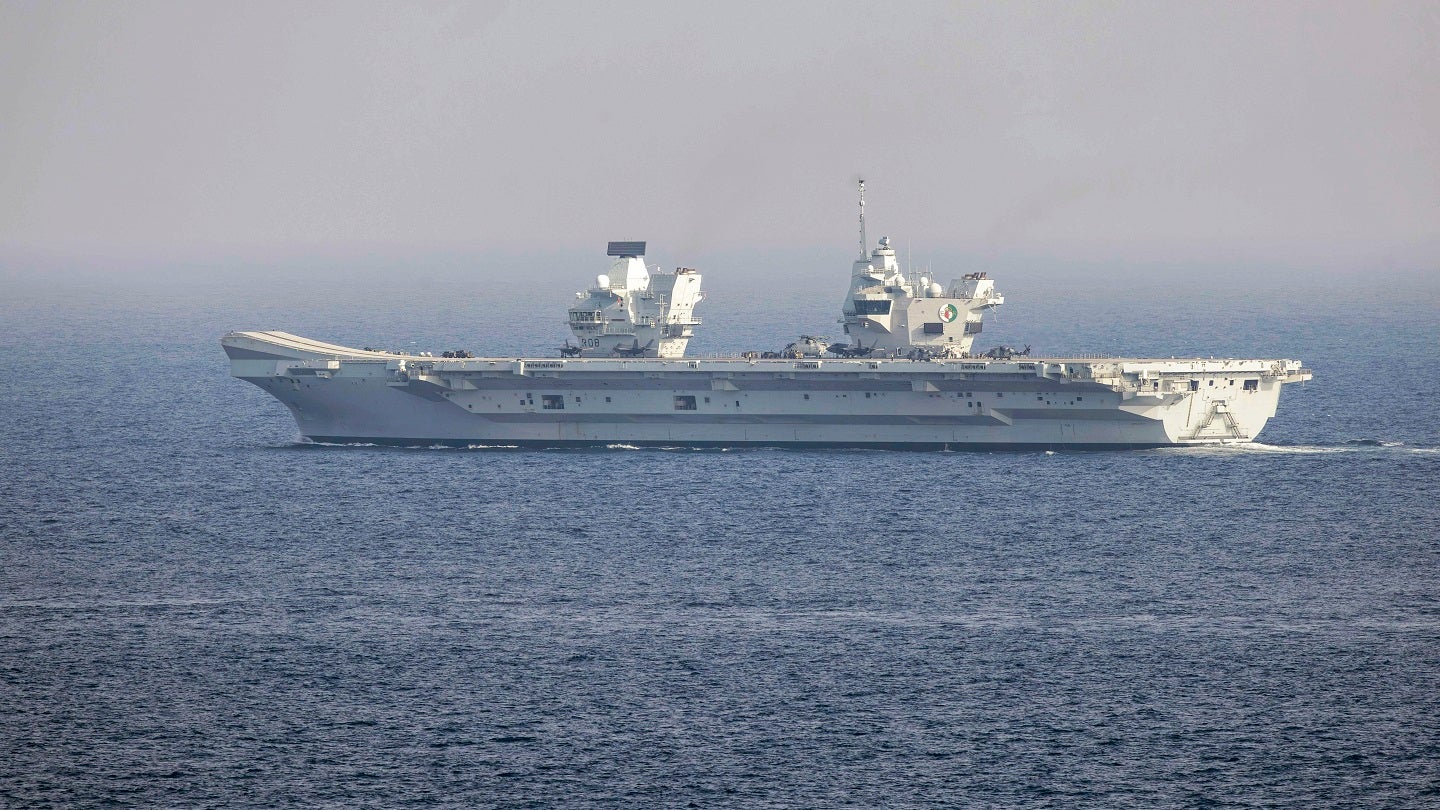
It is unlikely that the UK would be required to send one of its Queen Elizabeth-class aircraft carriers to the Red Sea in support of security operations in the near term, with the US Navy’s USS Dwight D Eisenhower having only arriving in the region in November last year.
Recent reports following an interview given by James Heappey, Minister for the Armed Forces, to an in-house UK parliamentary magazine indicated that the Royal Navy could be tasked to fill any capability gap created when the USS Dwight D Eisenhower departs from its current station.

Discover B2B Marketing That Performs
Combine business intelligence and editorial excellence to reach engaged professionals across 36 leading media platforms.
The only publicly-known deployment of a UK Queen Elizabeth class this year is to participate in Exercise Steadfast Defender, a wide-ranging Nato effort to showcase and improve military readiness in the European theatre in light of Russia’s ongoing war in Ukraine. A UK carrier not scheduled to transit through the Suez Canal and into Red Sea and wider Indian Ocean until 2025, with the deployment of a Queen Elizabeth class to the Asia-Pacific region.
An MoD spokesperson said: “As the Minister set out, any decision as to whether to deploy the carriers will be made in conjunction with our allies and based on operational need.”
When contacted, US Central Command said that it would not comment as to how or when the USS Dwight D Eisenhower would be replaced when it eventually leaves its position.
The UK, US, and other allies are currently engaged in an ongoing maritime security campaign in the Red Sea, protecting merchant shipping from missile and drone attacks launched by the Houthi faction in Yemen. The Houthis are known to be supplied and supported by Iran through the Iranian Revolutionary Guard Corps Al Quds unit, which maintains a network of proxy forces and allies in the Middle East.

US Tariffs are shifting - will you react or anticipate?
Don’t let policy changes catch you off guard. Stay proactive with real-time data and expert analysis.
By GlobalDataUS and UK forces have also conducted air strikes against Houthi targets in Yemen, with the presence of carrier-based aviation onboard the USS Dwight D Eisenhower providing an immediate capability at hand. The UK had to rely on Royal Air Force Typhoon multirole fighters launched from RAF Akrotiri in Cyprus, some 2,500km distant.
The recent departure of the USS Gerald R Ford and its carrier strike group from the Mediterranean region, deployed following the outbreak of hostilities between Israel and Hamas in October last year, did not see a UK carrier take its place.
Nuclear vs conventional: a question of endurance
Commissioned into service with the US Navy in 1977, the USS Dwight D Eisenhower is powered by a nuclear reactor, meaning that its time-limiting factors for deployments centre around feeding its approximate 4,000 personnel and other solid stores related to maintaining a vessel at sea for extended periods.
A dedicated strike group support US carriers on deployment, including support vessels tasked with ensuring the vessel has the necessary stores to maintain itself on station. As the second-largest class of warships afloat in the world, behind its newer Ford-class aircraft carriers just entering US Navy service, the 100,000 tonne Nimitz-class carriers, from which Eisenhower hails, have their own significant stock of stores onboard.
Meanwhile, the UK’s Queen Elizabeth-class carriers are conventionally powered and require fuel as well as solid stores to maintain operations. While the Royal Navy has Tide-class fleet tankers available to fuel a Queen Elizabeth class, its sole remaining Fort-class stores vessel, RFA Fort Victoria, is about to enter a maintenance period and not expected to undertake any part in Exercise Steadfast Defender, which will conclude in May.
The availability timeline for Fort Victoria, and with the Dwight D Eisenhower able to maintain itself in the Red Sea region for several more weeks if not months, any UK carrier deployment to the Red Sea would likely not occur, if at all, until mid-summer at the earliest.





